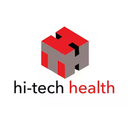Claim Processing software: purchase guide
Buying claim processing software is a significant investment for any organization involved in handling insurance claims, whether in the insurance sector, healthcare, or financial services. This guide will help you navigate the complexities of selecting the right software by covering essential aspects such as features, considerations, and potential pitfalls.
1. Understanding Your Needs
Before diving into the purchase, it's crucial to understand your specific requirements. Consider the following:
- Volume of Claims: Estimate the number of claims you process daily, weekly, or monthly.
- Complexity: Evaluate the complexity of claims, including the need for fraud detection, multi-step adjudication, and various policy terms.
- Integration: Assess how the new software will integrate with your existing systems, such as CRM, ERP, or other management tools.
- User Base: Determine who will be using the software (e.g., claim adjusters, customer service reps) and their technical proficiency.
2. Essential Features to Look For
Claim processing software comes with a range of features. Ensure the software you choose includes the following essential features:
- Automated Data Entry: Reduces manual input errors and speeds up initial claim submission.
- Validation and Verification: Ensures claims data is accurate and complete before processing.
- Rule-Based Adjudication: Automates the evaluation of claims based on predefined rules and policy terms.
- Fraud Detection: Uses AI and machine learning to identify and flag potentially fraudulent claims.
- Workflow Automation: Streamlines the entire claim lifecycle from submission to settlement.
- Document Management: Allows for efficient storage, retrieval, and management of claim-related documents.
- Communication Tools: Facilitates seamless communication between claimants and the organization.
- Reporting and Analytics: Provides insights into claim processing performance and helps identify trends.
- Compliance Management: Ensures the software adheres to relevant regulatory requirements.
3. Key Considerations Before Purchasing
When evaluating claim processing software, keep these considerations in mind:
- Scalability: Choose a solution that can grow with your business and handle increasing claim volumes.
- User-Friendly Interface: Ensure the software is intuitive and easy to use for all team members.
- Customization: Look for software that can be tailored to your specific workflows and policy requirements.
- Customer Support: Assess the vendor’s support services, including training, technical support, and customer service.
- Cost: Consider the total cost of ownership, including licensing fees, implementation costs, training, and ongoing maintenance.
- Security: Ensure the software has robust security features to protect sensitive claim and customer data.
- Vendor Reputation: Research the vendor’s reputation, including customer reviews, case studies, and industry standing.
4. What to Be Careful About
While shopping for claim processing software, be aware of potential pitfalls:
- Hidden Costs: Be mindful of additional costs such as customization, data migration, and third-party integrations.
- Overcomplicated Systems: Avoid systems that are too complex for your team to use effectively.
- Vendor Lock-In: Ensure you’re not locked into a long-term contract without flexibility or exit options.
- Lack of Updates: Choose a vendor that regularly updates the software to improve features and security.
- Inadequate Training: Ensure the vendor provides comprehensive training to help your team fully utilize the software.
- Compatibility Issues: Verify that the software is compatible with your existing systems and workflows.
5. Steps to Purchasing Claim Processing Software
Follow these steps to make an informed decision:
- Define Requirements: Document your business needs, goals, and specific requirements.
- Research Vendors: Shortlist vendors based on features, reputation, and customer reviews.
- Request Demos: Schedule demonstrations with shortlisted vendors to see the software in action.
- Evaluate Options: Compare the demos against your requirements and budget.
- Seek Feedback: Get input from your team members who will be using the software.
- Check References: Ask vendors for customer references and contact them to learn about their experiences.
- Negotiate Terms: Discuss pricing, contract terms, and service level agreements with the chosen vendor.
- Pilot Testing: Run a pilot test to ensure the software meets your needs before full deployment.
- Finalize Purchase: Once satisfied, finalize the purchase and plan for implementation.
6. Post-Purchase Implementation and Training
After purchasing the software, focus on a smooth implementation and training process:
- Implementation Plan: Work with the vendor to develop a detailed implementation plan, including timelines and milestones.
- Data Migration: Ensure secure and accurate migration of existing claim data to the new system.
- Training: Provide comprehensive training to all users to maximize the software’s potential.
- Monitor Performance: Regularly monitor the system’s performance and gather feedback from users to identify areas for improvement.
- Continuous Improvement: Stay updated with the latest software updates and enhancements to continually improve your claim processing operations.
By following this guide, you can make an informed decision and select claim processing software that best fits your organization’s needs, ensuring improved efficiency, accuracy, and customer satisfaction in your claim management processes.

